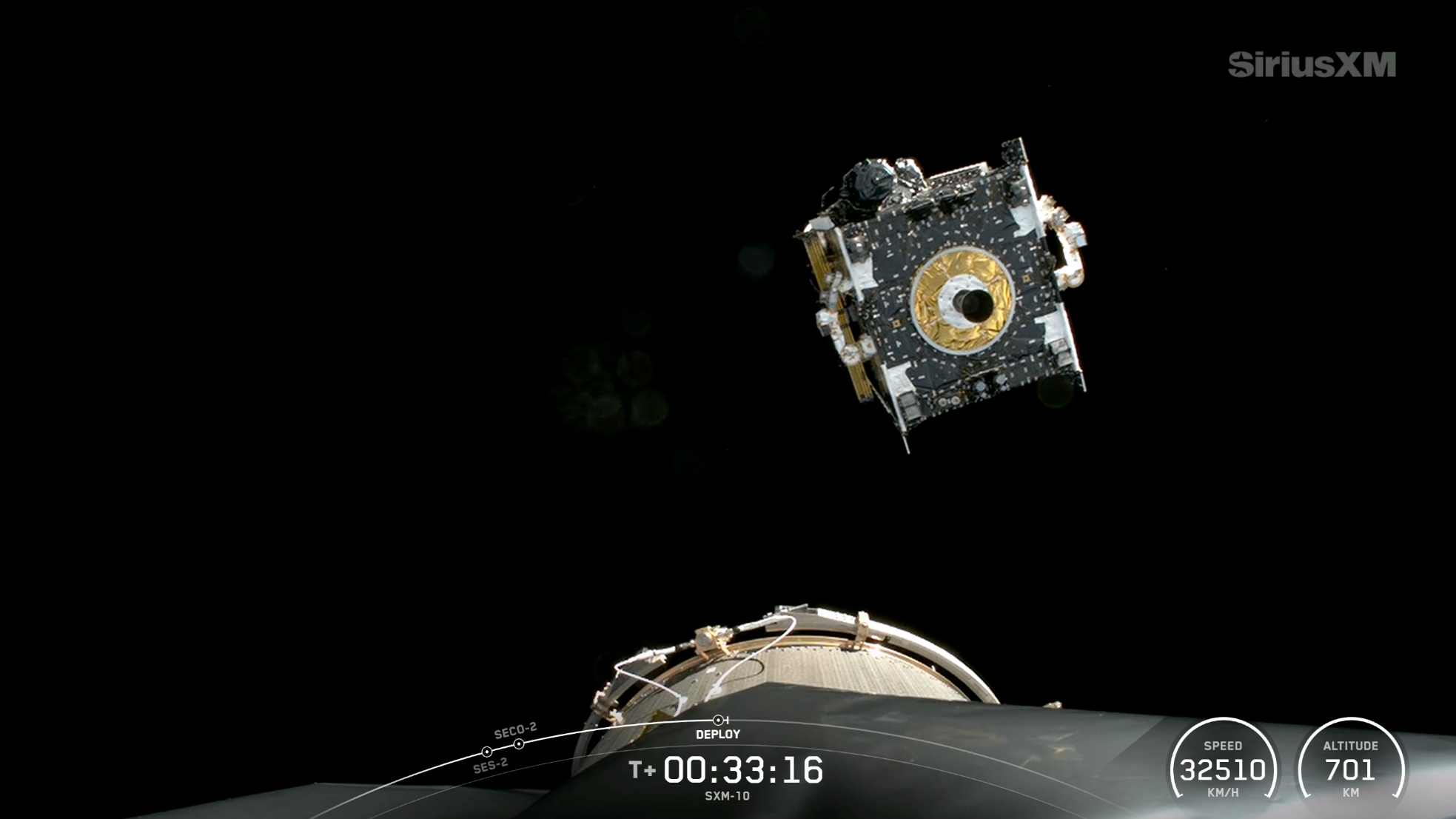On Saturday morning, June 7, SpaceX successfully launched the SXM-10 satellite for SiriusXM, further expanding its satellite broadcast network.
The Falcon 9 rocket, which carried the SXM-10, took off from Cape Canaveral Space Force Station in Florida at 12:54 a.m. EDT (0454 GMT).
Approximately 8.5 minutes after launch, the rocket’s first stage returned to Earth as intended, landing on the SpaceX drone ship named “A Shortfall of Gravitas,” located in the Atlantic Ocean.

This launch marked the eighth flight and landing for this specific booster, as noted in SpaceX’s mission details.
This booster has previously participated in missions such as Crew-9 and Fram2 astronaut launches, along with the January 15 liftoff that sent two private lunar landers—Firefly Aerospace’s Blue Ghost and ispace’s Resilience—toward the Moon.
The Blue Ghost successfully landed on the lunar surface on March 2, but unfortunately, Resilience crashed during its landing attempt on June 5.
The Falcon 9’s upper stage facilitated the SXM-10 satellite’s journey to geosynchronous transfer orbit, successfully deploying it around 33 minutes post-launch.
Weighing 14,100 pounds (6,400 kilograms) and built by Maxar Technologies, the satellite will now begin its maneuvers to integrate into SiriusXM’s radio network, enhancing its functionality.
This launch was SpaceX’s second for SiriusXM in just half a year; they had previously launched the SXM-9 satellite in early December 2024.
In total, SpaceX has executed 69 Falcon 9 missions in 2025 alone, with 51 of those focused on expanding the Starlink broadband constellation in low Earth orbit.

